Tensile Tests for the Improvement of Adhesion between Rubber and Steel Layers in Elastomeric Isolators
Abstract
:1. Introduction
- -
- the isolator is subjected to direct tensile stresses, i.e., a tensile action is present
- -
- the isolator is subjected to large shear strains, which induce tensile stresses in the isolator extremities bounded by the white dotted line shown in Figure 1.
2. Sample Characteristics
- -
- 35,713—hardness 70, shore A, styrene butadiene rubber (SBR)-based, which is a synthetic rubber, dissipative compound
- -
- 35,718—hardness 60, shore A, natural rubber (NR)-based, dissipative compound
- -
- 34,821—hardness 40, shore A, NR-based, dissipative compound
- -
- 312—hardness 70, shore A, SBR-based, non-dissipative compound
- -
- 27,303—hardness 60, shore A, SBR-based, dissipative compound.
- -
- The basic vulcanization time of the tested samples, considering their dimensions is 135 min according to ILPEA manufacturing standards. In the experimental campaign, this time was varied to investigate if the variation produced effects on the layers’ adhesion. Longer vulcanization time involves longer pressure application and heating, which are the processes that result in the reorganization of the rubber compound crosslinks to obtain the final elastomer and the gluing of the elastomer to the steel layers. Time periods of 150 and 180 min are taken into consideration.
- -
- Corundum was used for sandblasting instead of standard grit to produce some of the samples used in the study. Corundum is an aluminum oxide and it is used in the manufacture of abrasives because of its great hardness, which is close to that of diamond. It can also be produced synthetically. This material may be able to increase the roughness of steel reinforcements, and consequently, the adhesion between steel and elastomer layers.
- -
- Isolators usually have an elastomer layer covering the lateral external surface. This layer is obtained by using steel reinforcements that have a diameter or side length smaller than the interior dimension of the mold. During the vulcanization, the elastomer of the horizontal layers occupies the spaces that remain empty near the surface of the mold, and thus creates the external covering. This covering protects the isolator core from external agents. For most of the considered samples, the thickness of the external covering was equal to 5 mm, but some samples without external covering layer were also tested for comparison.
- -
- In the isolator manufacturing process, the elastomer layers are sometimes left for a long time in the warehouse before being used to build isolators. During this storage period, an oily component of the elastomer tends to rise on the outer surface of the layer. Therefore, this oily component could partially compromise the adhesion of the elastomer to the mastic. For this reason, a number of samples were produced using elastomer without this component.
- -
- Additionally, several samples were produced with elastomer layers that had been refreshed before being put into the mold for vulcanization, in order to eliminate the problem of oily component on the surfaces.
- -
- In some samples, a “bridge layer”, which aims at increasing the elastomer-steel adhesion, was put between the mastic and the elastomer layer.
- -
- Moreover, considering samples with the same shear modulus of 0.8 MPa, three different elastomeric compounds: 35,718, 312 and 27,303 were used to investigate the influence of compound type on the adhesion behavior. The difference between compound 35,718 and 27,303 is in the type of rubber used to produce the elastomer, that is, NR for the former and SBR for the latter, while compound 312 is not dissipative, unlike compound 27,303.
3. Experimental Investigation
3.1. Test Setup and Instrumentation
3.2. Experimental Results
- -
- , which is the maximum force that the sample withstands
- -
- , which is the elongation of the sample for
- -
- , which is the elongation of the sample at failure, calculated as the elongation corresponding to a force reduced of 5% with respect to .
- -
- Cohesive failure is when the failure occurs only inside the elastomer due to the tensile stresses. This failure produces a ruptured surface within the elastomer with tear damage, as it can be seen in Figure 4b. In samples that undergo this type of failure, the deformation and strength properties of the elastomer are completely exploited before the occurrence of adhesive failure.
- -
- Adhesive failure occurs when the failure involves the bonding surface between the steel and elastomer and results in a detachment, without any damage to the elastomer component. It results in the elastomeric layer detaching from the steel layer (Figure 5b) and occurs when the bond strength between the two layers is not sufficient to attain cohesive failure.
- -
- Mixed failure is manifest by intermediate behaviors (Figure 6b) between the cohesive and adhesive failures described above. In this case, some portions of the sample show rubber detached from steel, and other portions show tear damage.
4. Discussion
4.1. Influence of Increase in Vulcanization Time
4.2. Influence of Sandblasting with Corundum
4.3. Influence of External Covering Layer
4.4. Influence of Elastomer without an Oily Component
4.5. Influence of Use of Refreshed Elastomer
4.6. Influence of Bridge Layer
4.7. Influence of Base Rubber Type and Non-Dissipative Behavior of the Elastomer Compound
5. Conclusions
- -
- All samples, apart from samples 5 and 6, show satisfactory tensile behavior according to UNI EN 15129, i.e., they have a strength that is greater than 2 G.
- -
- An increase in vulcanization time does not improve the adhesion between elastomer and steel layers, on the contrary, for samples 5 and 6, it reduced their capacity in terms of strength.
- -
- The use of corundum in the sandblasting process does not improve or worsen the adhesion between elastomer and steel layers.
- -
- The absence of an external covering layer does not improve the adhesion between the layers, but instead, it worsens it in terms of the deformation capacity and failure type.
- -
- Using elastomer layers without an oily component. improves the adhesive behavior of elastomeric isolators, because they are able to avoid adhesive failure. Moreover, it increases the isolator ductility, i.e., its dissipative capacity.
- -
- The use of refreshed elastomer and the use of bridge layers does not negatively influence the adhesion between steel and elastomer, whereas they may improve the elongation capacity, i.e., the ductility, and consequently, the dissipative capacity of the isolator.
- -
- Synthetic rubber provides the isolator with greater ductility, i.e., dissipative capacity, in comparison with natural rubber, and greater strength.
- -
- A non-dissipative compound gives the isolator lower ductility without affecting its strength.
Author Contributions
Funding
Acknowledgments
Conflicts of Interest
References
- Kelly, J.M. Earthquake-Resistant Design with Rubber, 2nd ed.; Springer: London, UK, 1997. [Google Scholar]
- Naeim, F.; Kelly, J.M. Design of Seismic Isolated Structures from Theory to Practice; John Wiley & Sons: New York, NY, USA, 1999; 304p. [Google Scholar]
- Pauletta, M. Method to design fiber-reinforced elastomeric isolators (U-FREIs) and application. Eng. Struct. 2019, 197, 109366. [Google Scholar] [CrossRef]
- Pauletta, M.; Cortesia, A.; Pitacco, I.; Russo, G. A new bi-linear constitutive shear relationship for Unbonded Fiber-Reinforced Elastomeric Isolators (U-FREIs). Comp. Struct. 2017, 168, 725–738. [Google Scholar] [CrossRef]
- Russo, G.; Pauletta, M.; Cortesia, A. A Study on Experimental Shear Behavior of Fiber-Reinforced Elastomeric Isolators with Various Fiber Layouts, Elastomers and Aging Conditions. Eng. Struct. 2013, 52, 422–433. [Google Scholar] [CrossRef]
- Pauletta, M.; Battocchio, E.; Russo, G. A weathering steel elastomer joint for the connection between new and existing bridges. Eng. Struct. 2015, 105, 264–276. [Google Scholar] [CrossRef]
- Russo, G.; Pauletta, M. Sliding instability of fiber-reinforced elastomeric isolators in unbonded applications. Eng. Struct. 2013, 48, 70–80. [Google Scholar] [CrossRef]
- Russo, G.; Pauletta, M.; Cortesia, A.; Del Bianco, A. Experimental behavior of carbon fiber reinforced isolators. In Proceedings of the 2008 Seismic Engineering International Conference Commemorating the 1908 Messina and Reggio Calabria Earthquake, Reggio Calabria, Italy, 8–11 July 2008. [Google Scholar]
- Pauletta, M.; Cortesia, A.; Russo, G. Roll-out instability of small size fiber-reinforced elastomeric isolators in unbonded applications. Eng. Struct. 2015, 102, 358–368. [Google Scholar] [CrossRef]
- Angeli, P.; Russo, G.; Paschini, A. Carbon fiber-reinforced rectangular isolators with compressible elastomer: Analytical solution for compression and bending. Int. J. Solids Struct. 2013, 50, 3519–3527. [Google Scholar] [CrossRef] [Green Version]
- Maureira, N.; de la Llera, J.; Oyarzo, C.; Miranda, S. A nonlinear model for multilayered rubber isolators based on a co-rotational formulation. Eng. Struct. 2017, 131, 1–13. [Google Scholar] [CrossRef]
- Keda, Y.; Nagahashi, S. Earthquake response characteristics on uplift of multilayered elastomeric isolator of base isolated high-rise building with setback elevation: A study on the effects of simultaneous action input from horizontal and vertical ground motion on earth quake response characteristics of base isolated high-rise building, Part 2. J. Struct. Constr. Eng. 2010, 75, 913–922. [Google Scholar]
- Mitoulis, S.A. Uplift of elastomeric bearings in isolated bridges subjected to longitudinal seismic excitations. Struct. Infrastruct. Eng. 2015, 11, 1600–1615. [Google Scholar] [CrossRef]
- Tubaldi, E.; Mitoulis, S.A.; Ahmadi, H.; Muhr, A. A parametric study on the axial behaviour of elastomeric isolators in multi-span bridges subjected to horizontal seismic excitations. Bull. Earthq. Eng. 2016, 14, 1285–1310. [Google Scholar] [CrossRef] [Green Version]
- European Committee for Standardization. UNI EN 15129-2009. Anti-Seismic Devices; European Committee for Standardization: Brussels, Belgium, 2009. [Google Scholar]
- Kalfas, K.N.; Mitoulis, S.A.; Katakalos, K. Numerical study on the response of steel-laminated elastomeric bearings subjected to variable axial loads and development of local tensile stresses. Eng. Struct. 2017, 134, 346–357. [Google Scholar] [CrossRef]
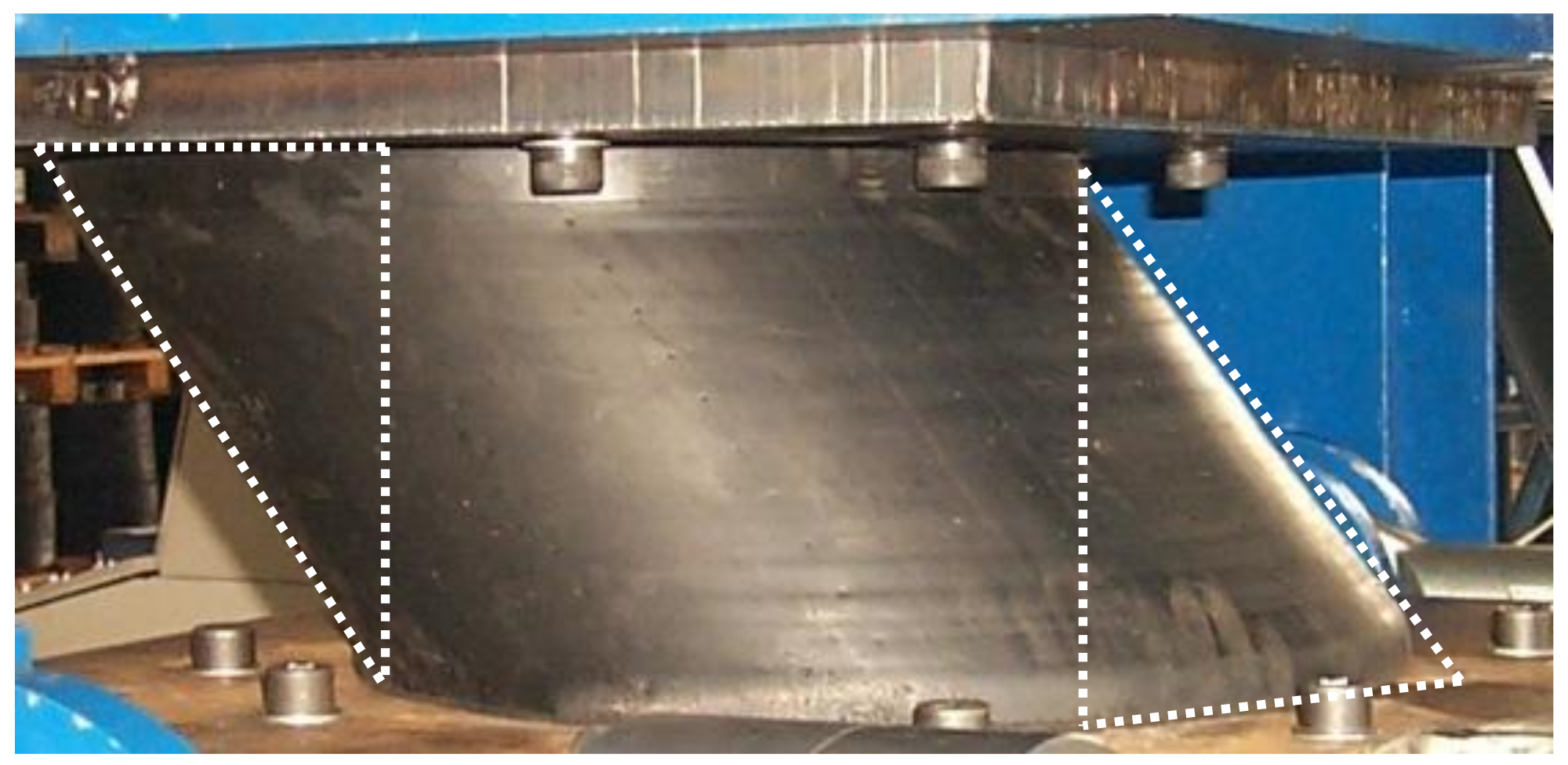

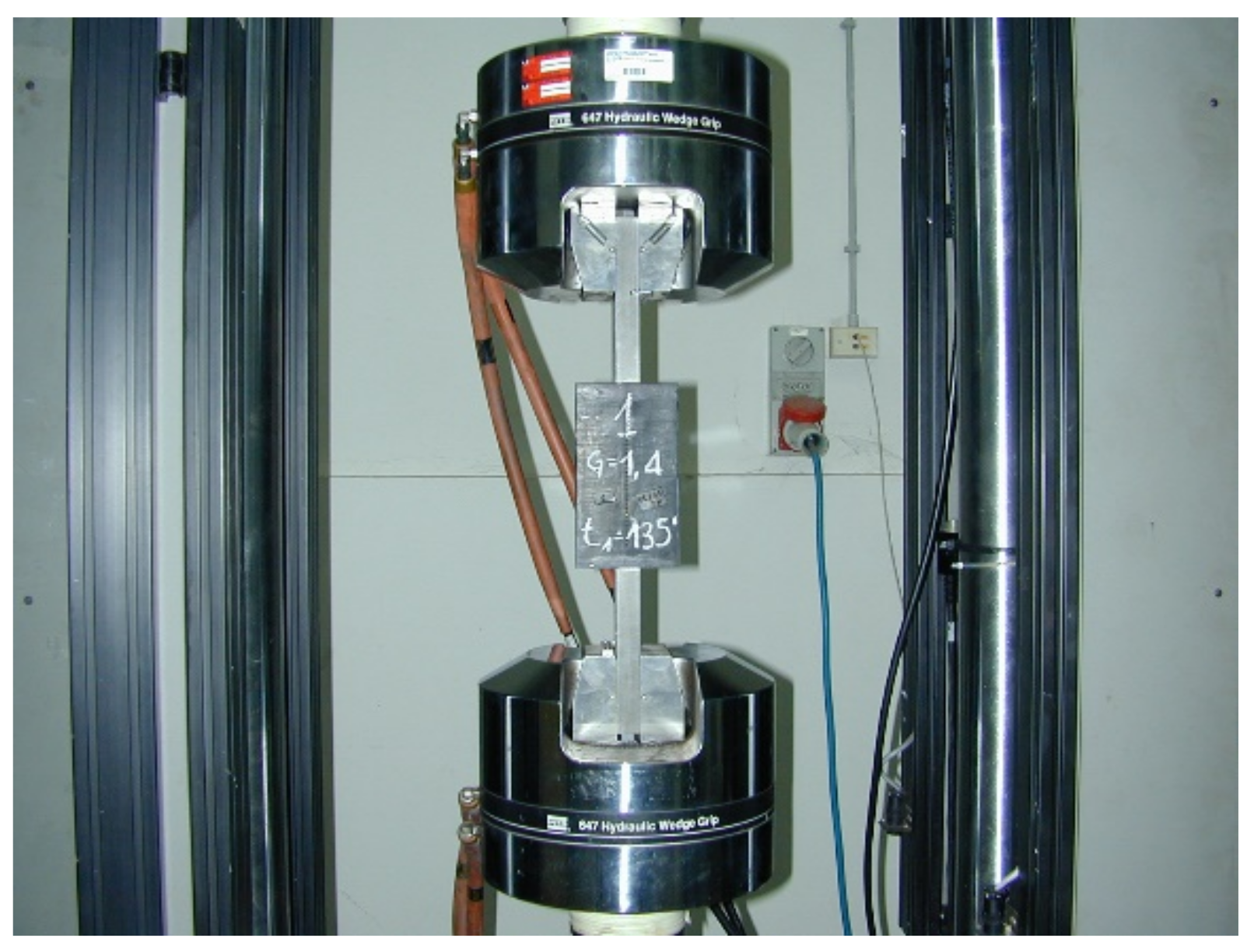



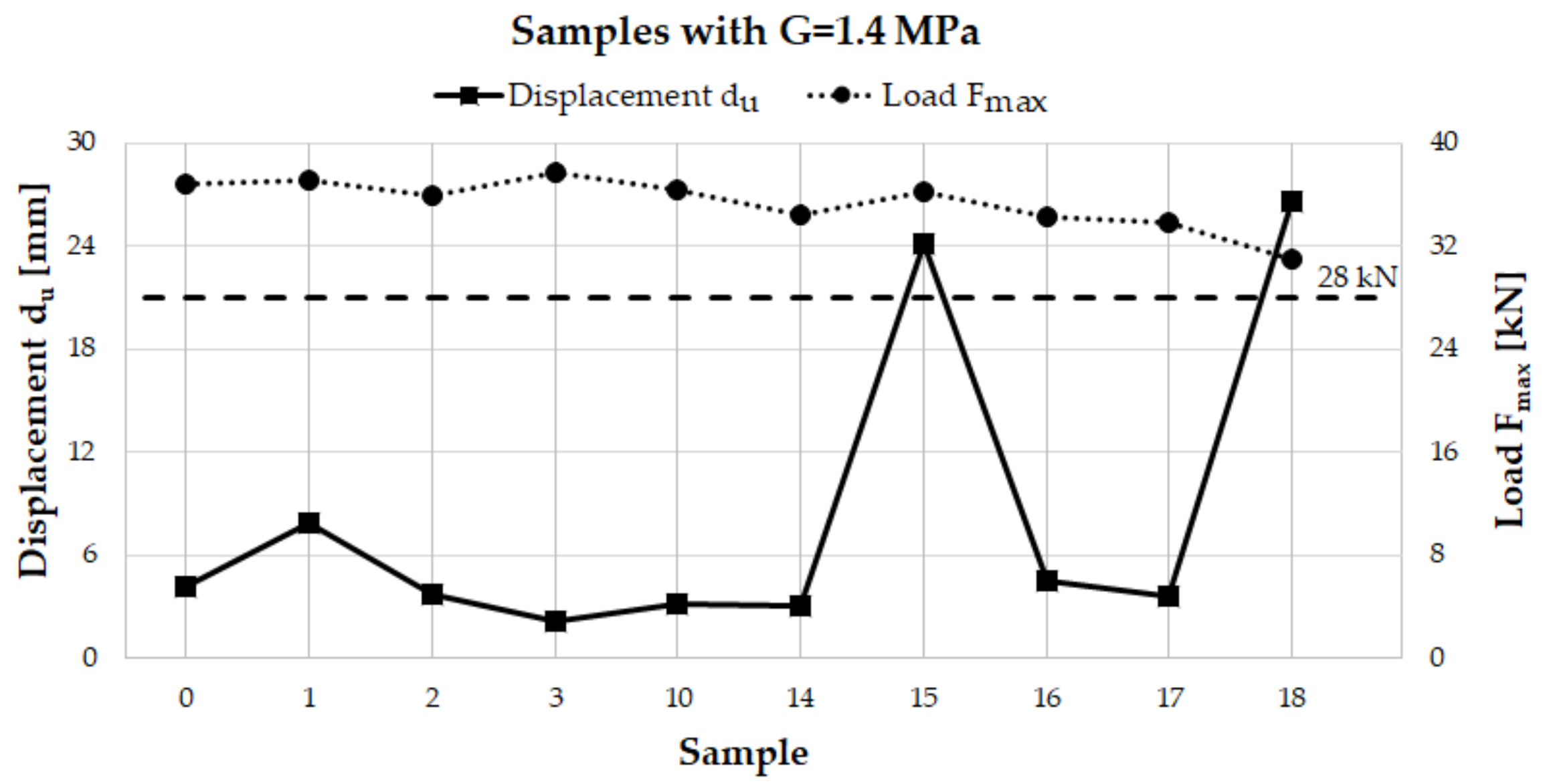


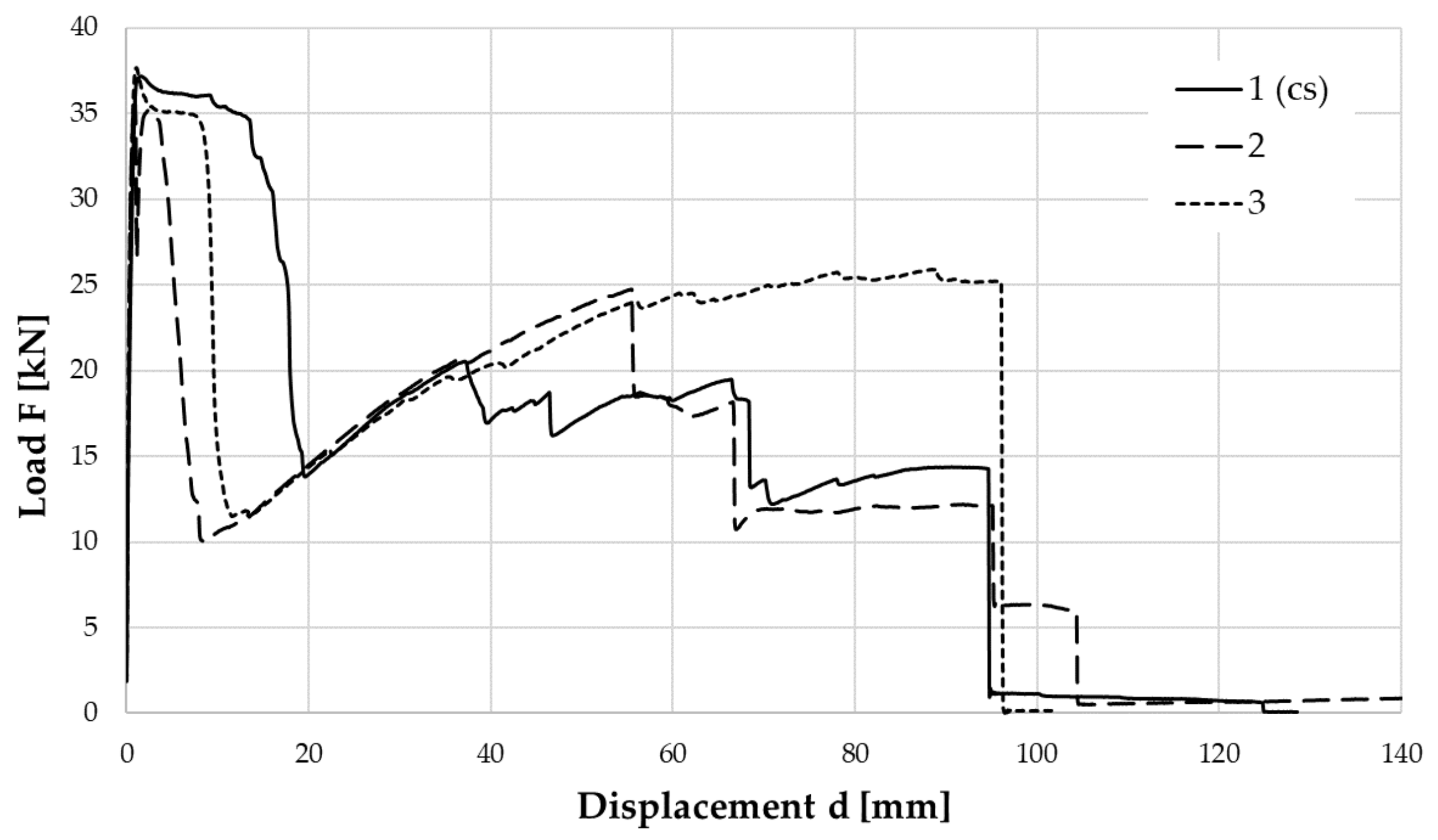
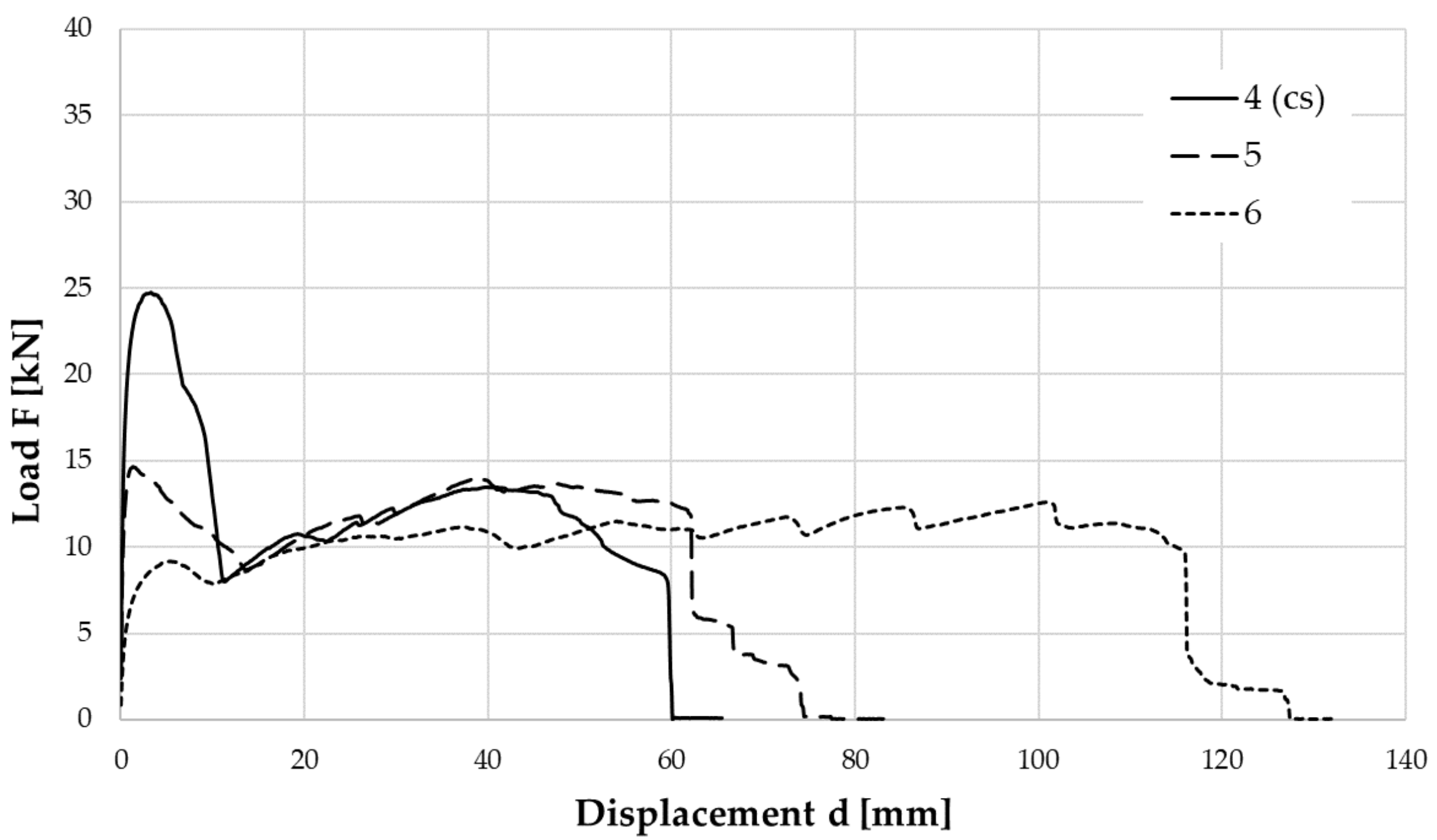
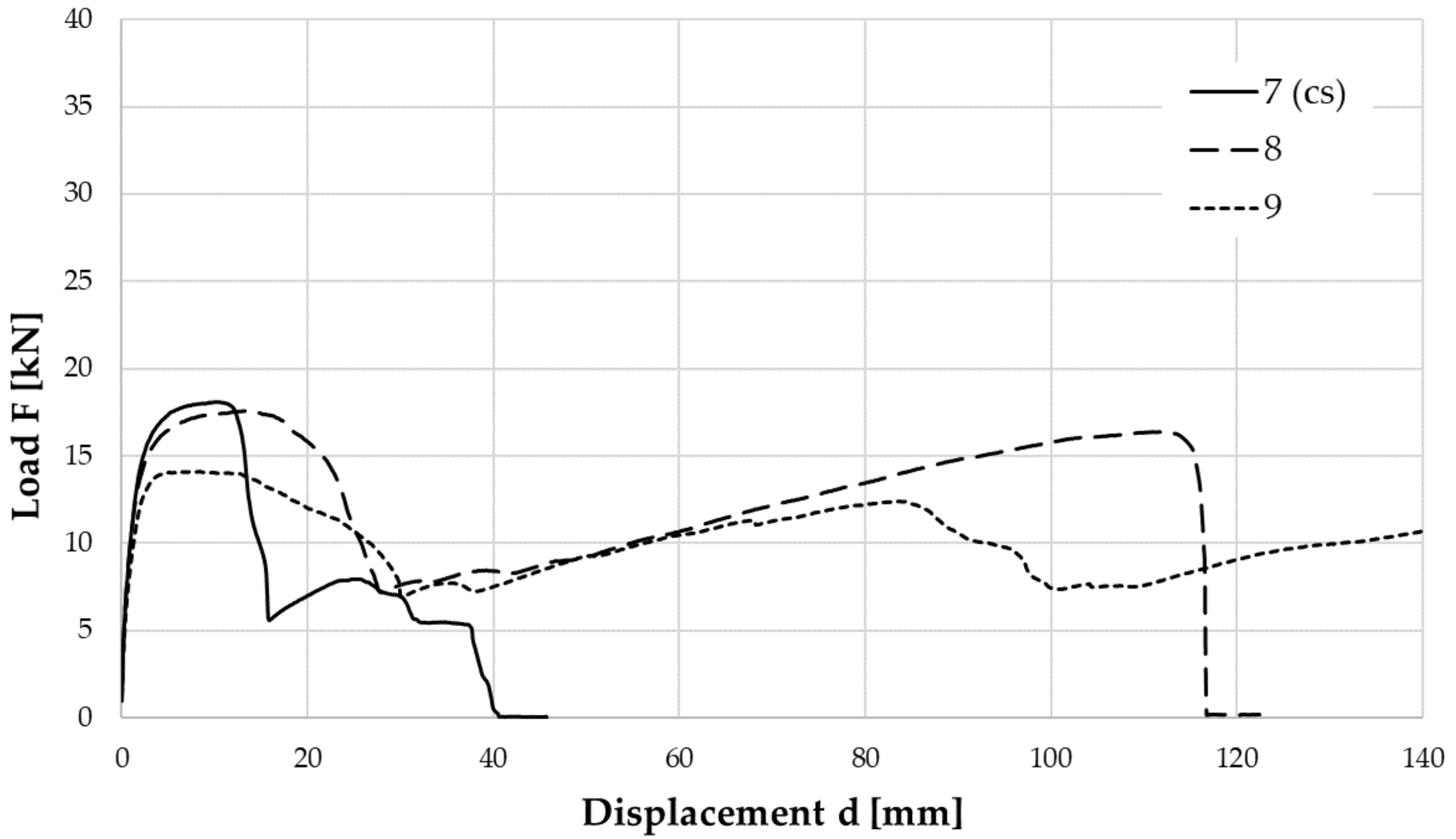


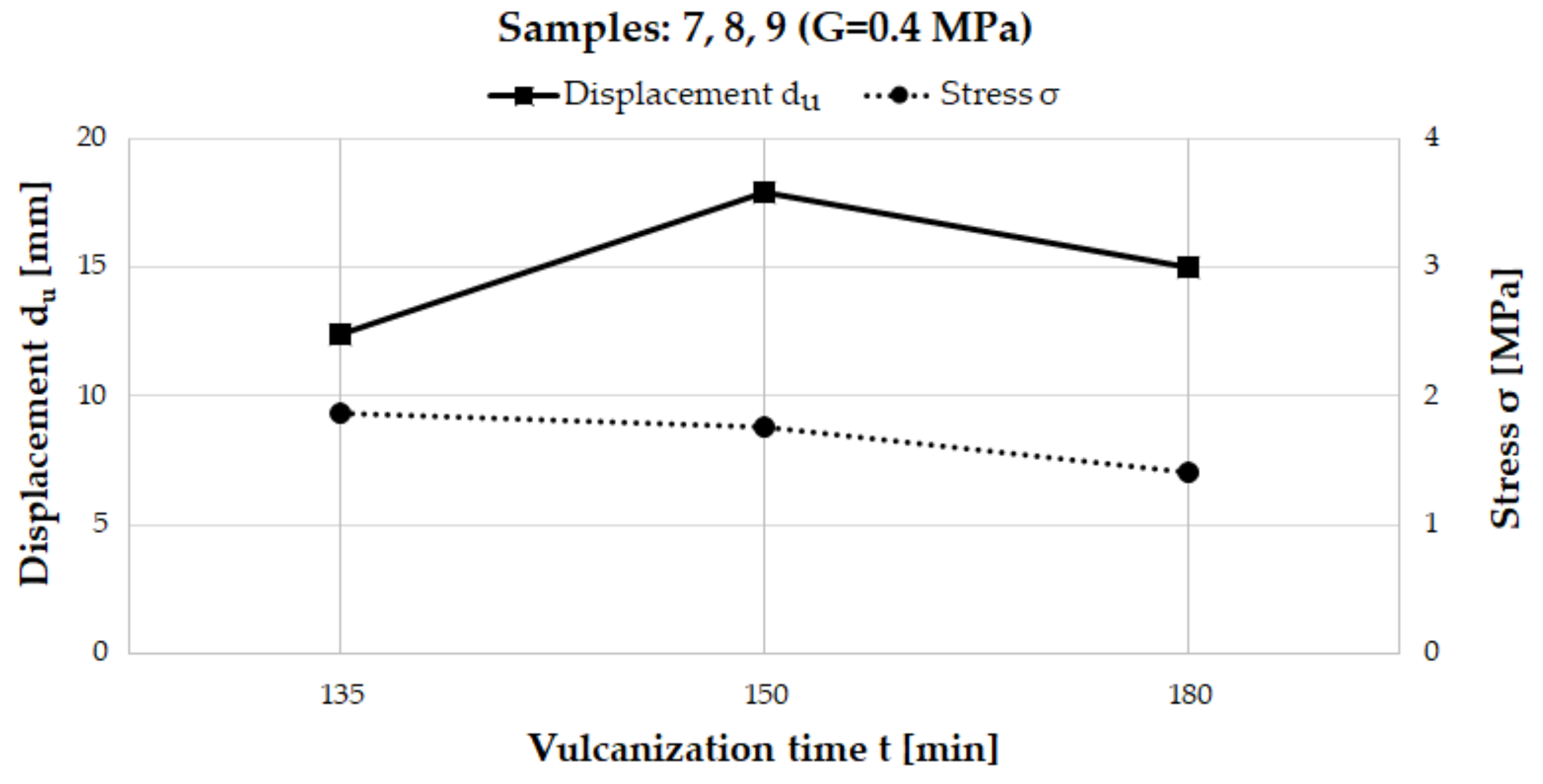
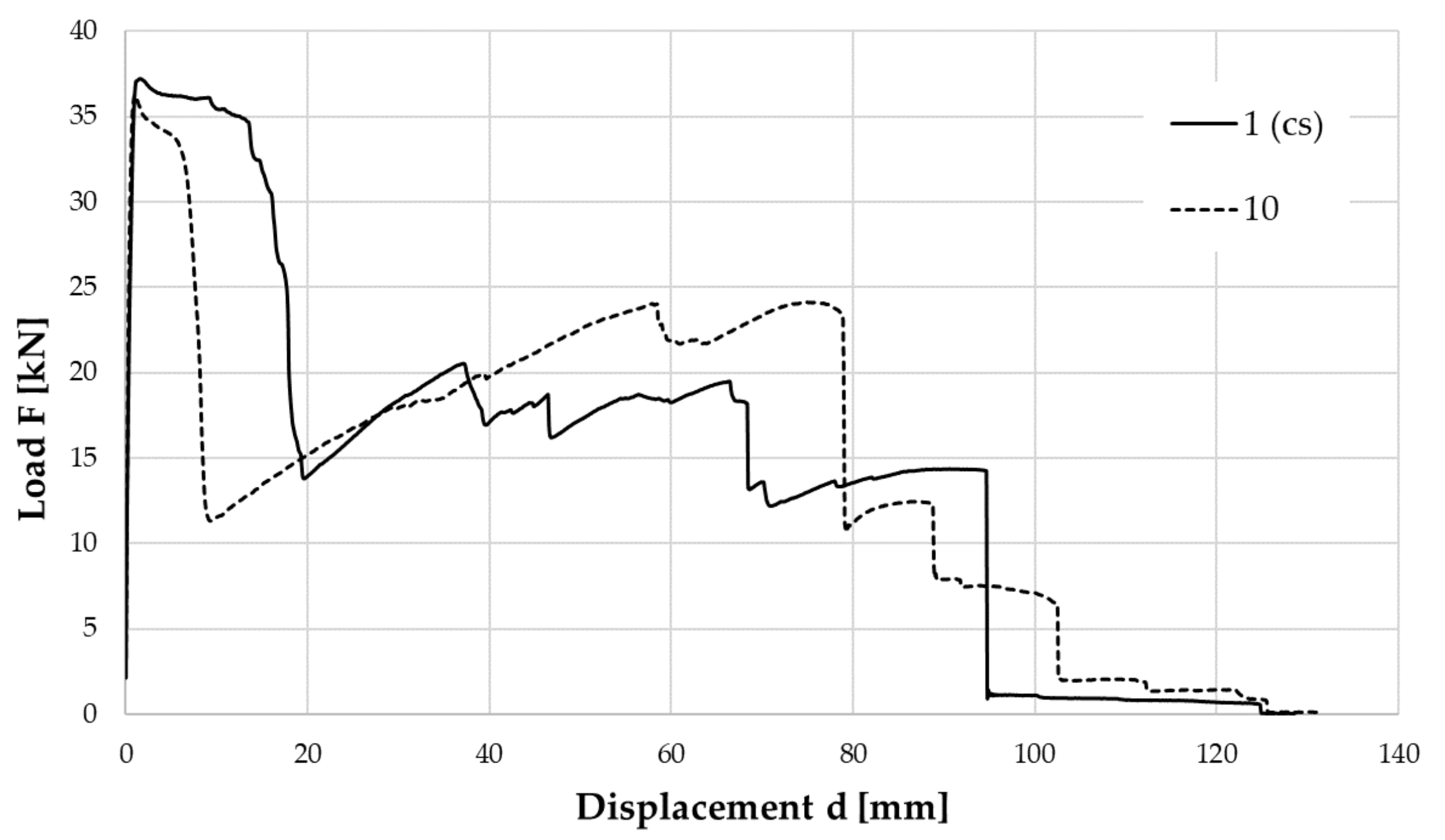

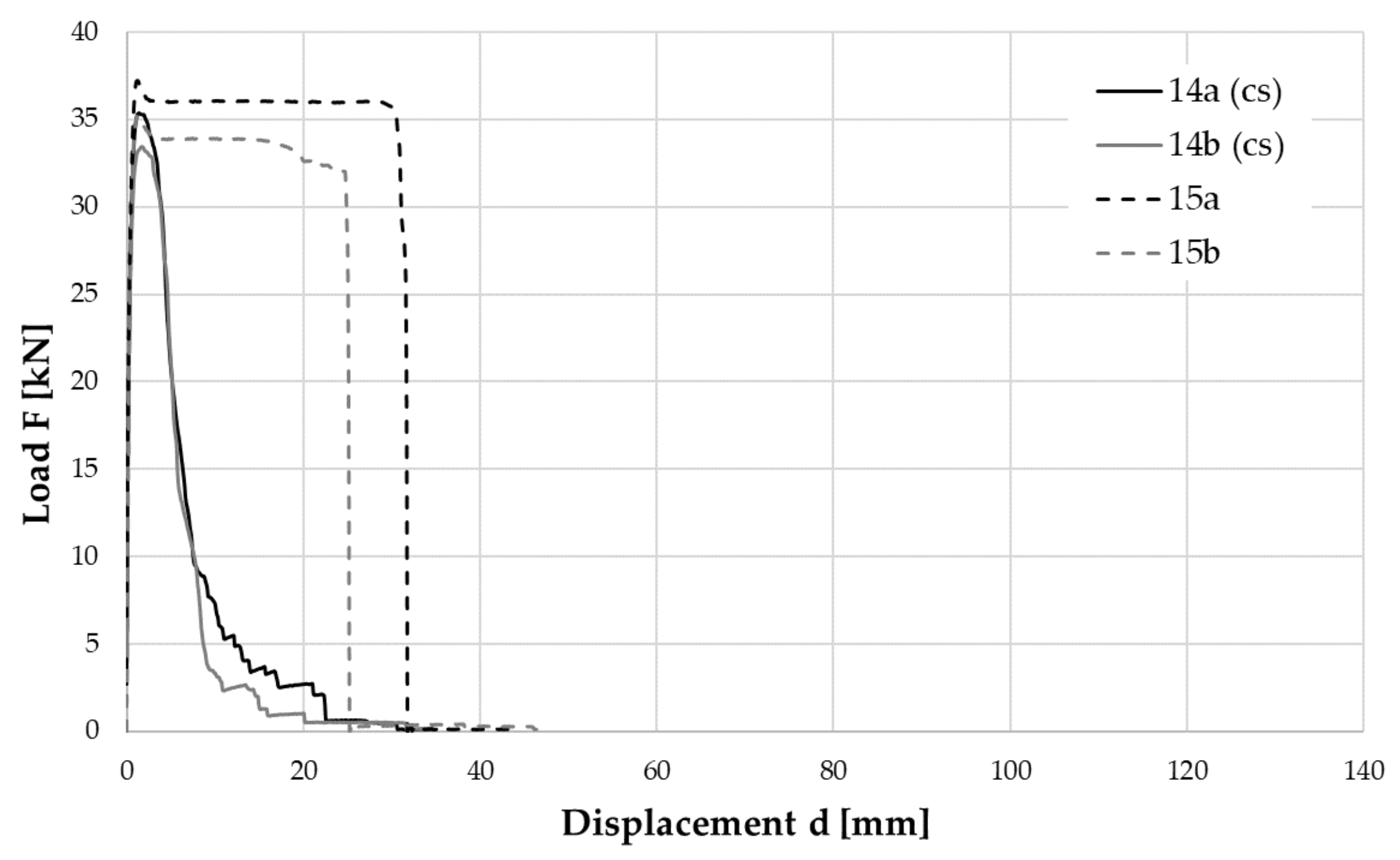
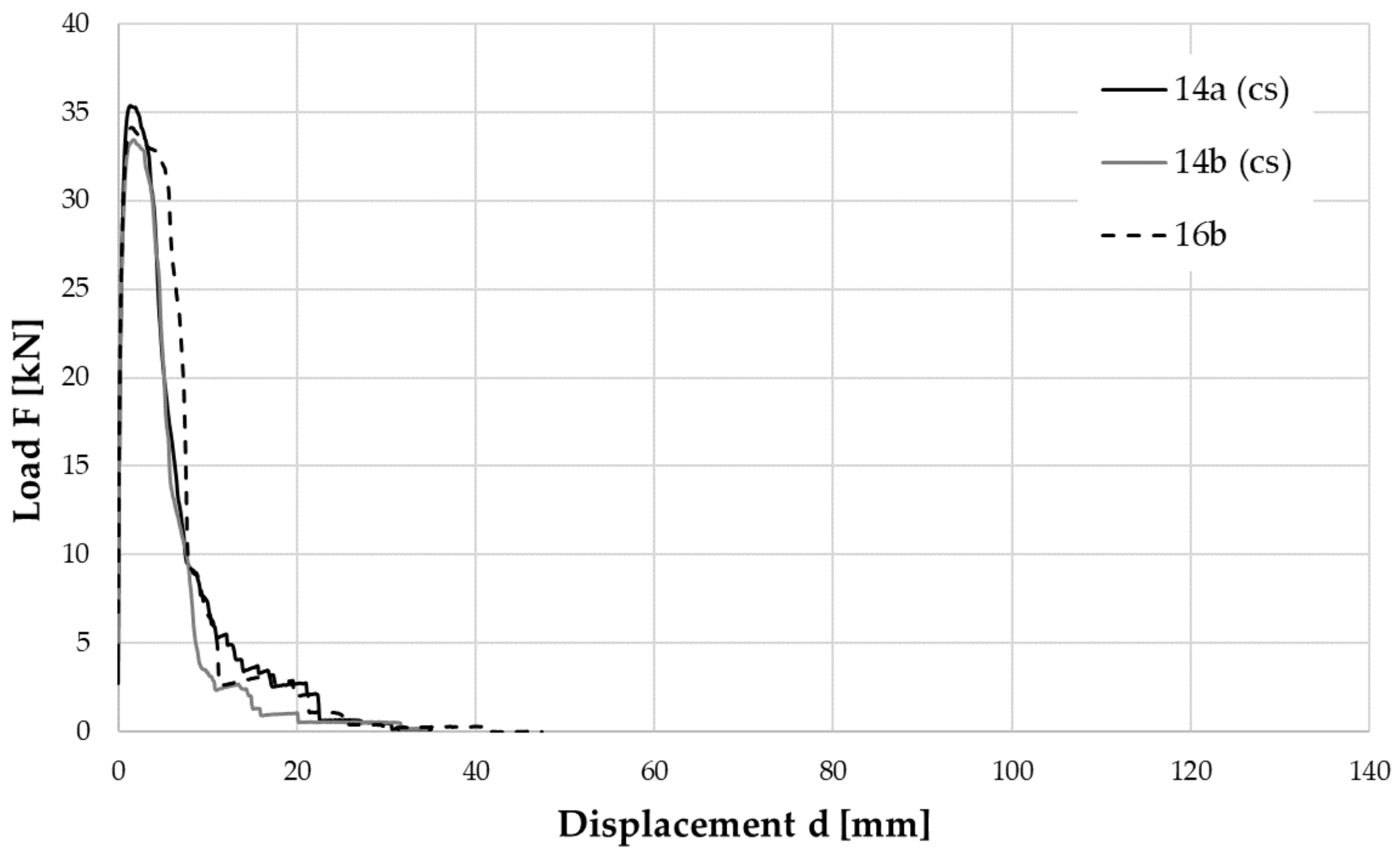
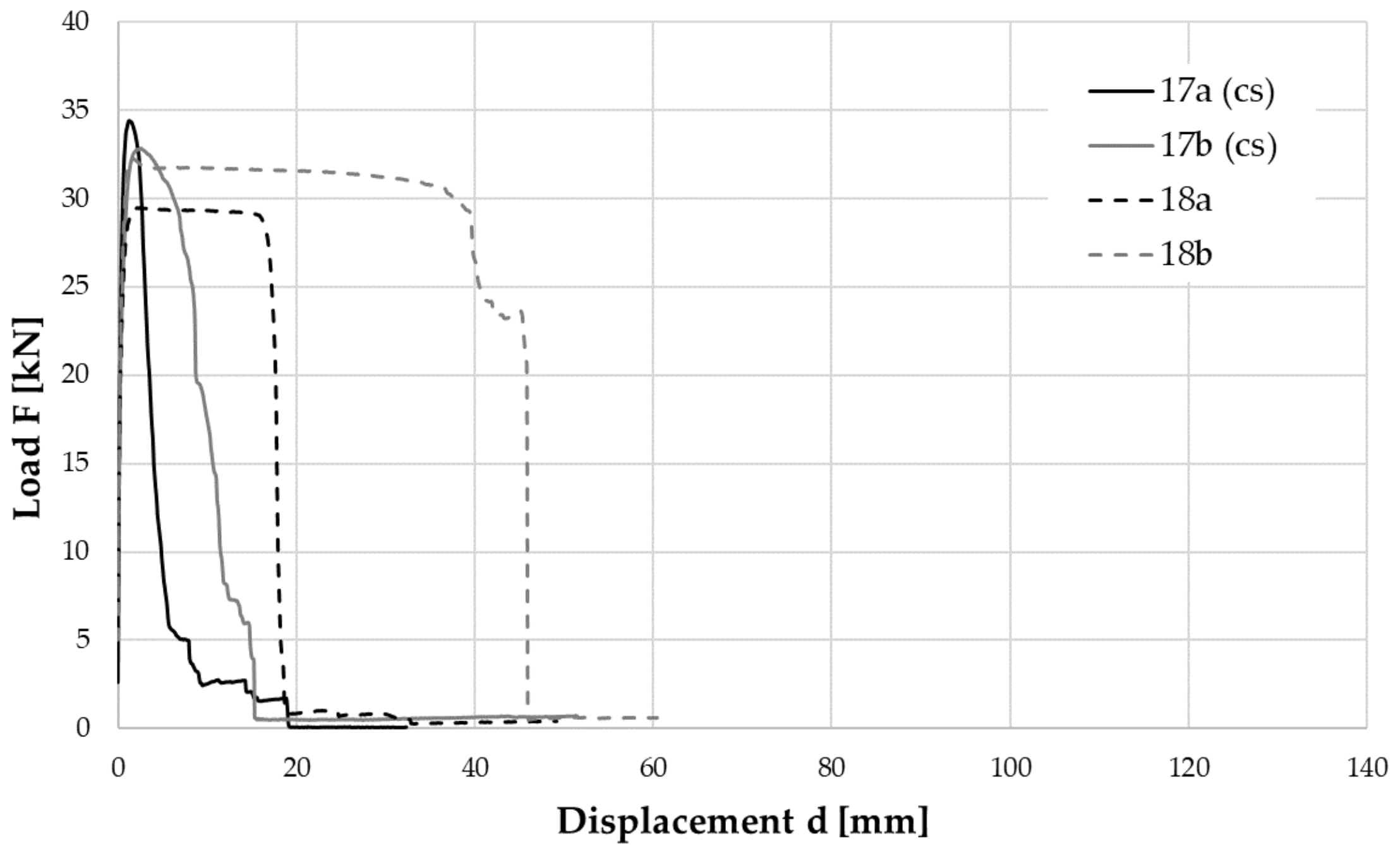
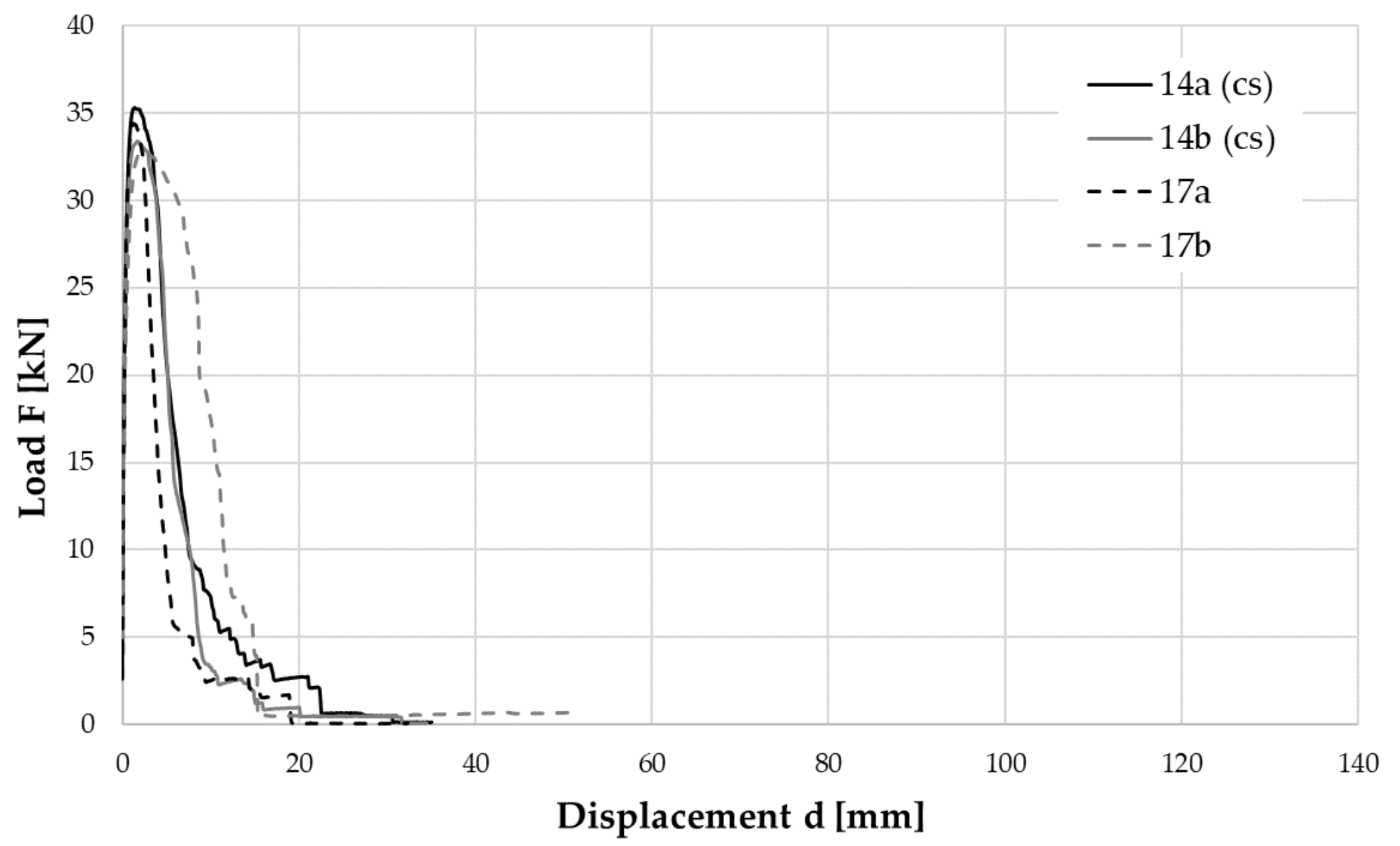
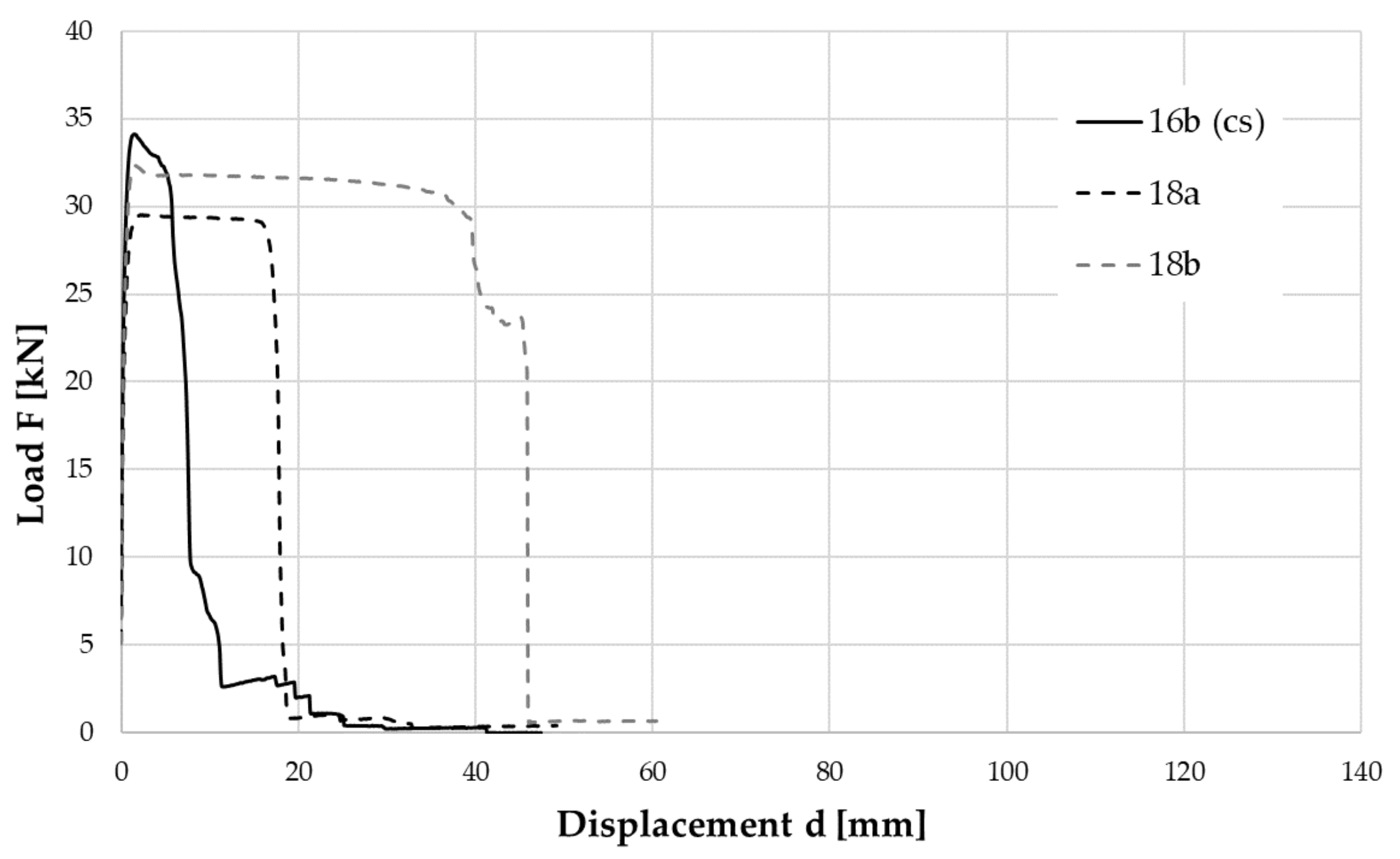
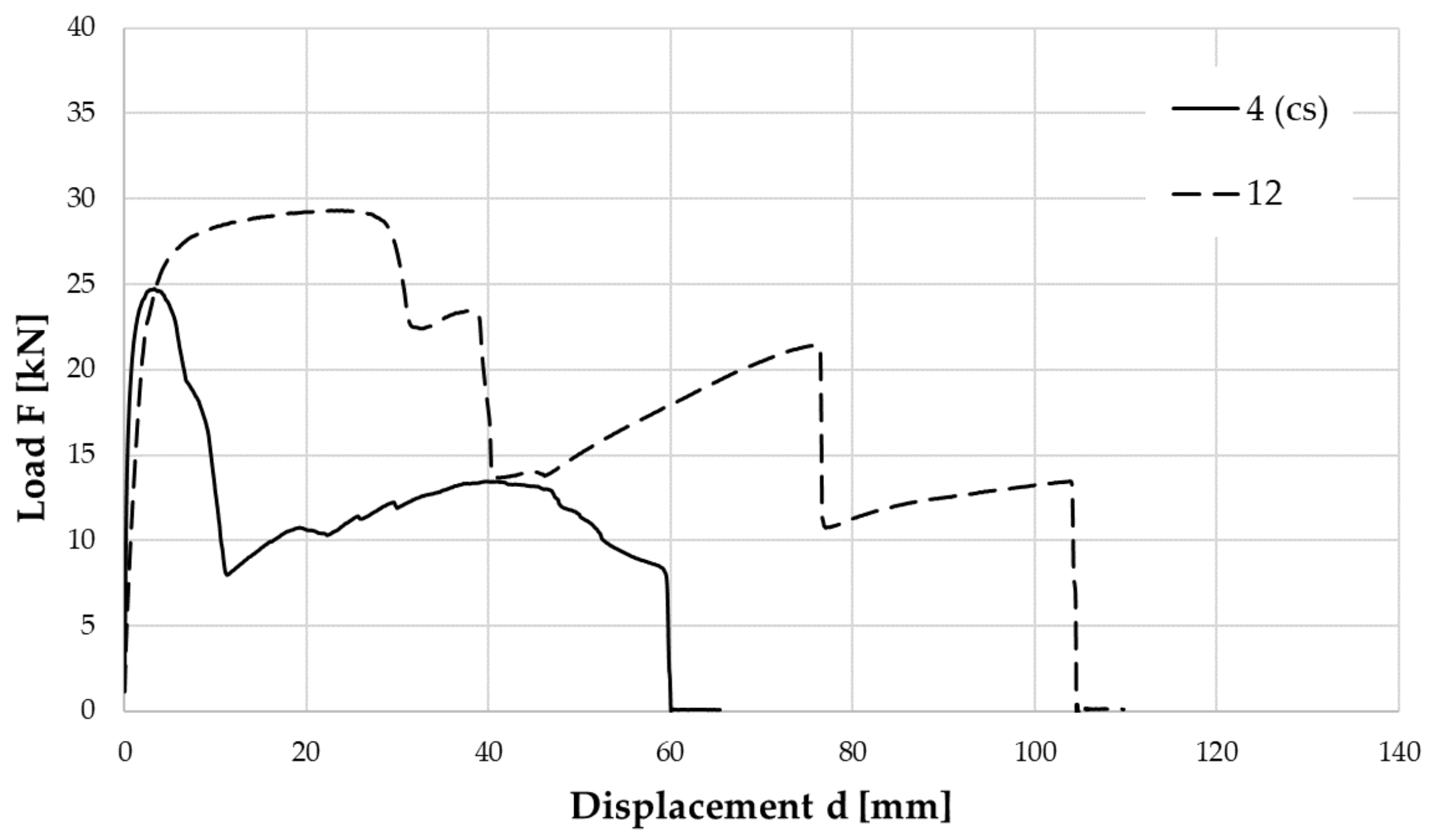
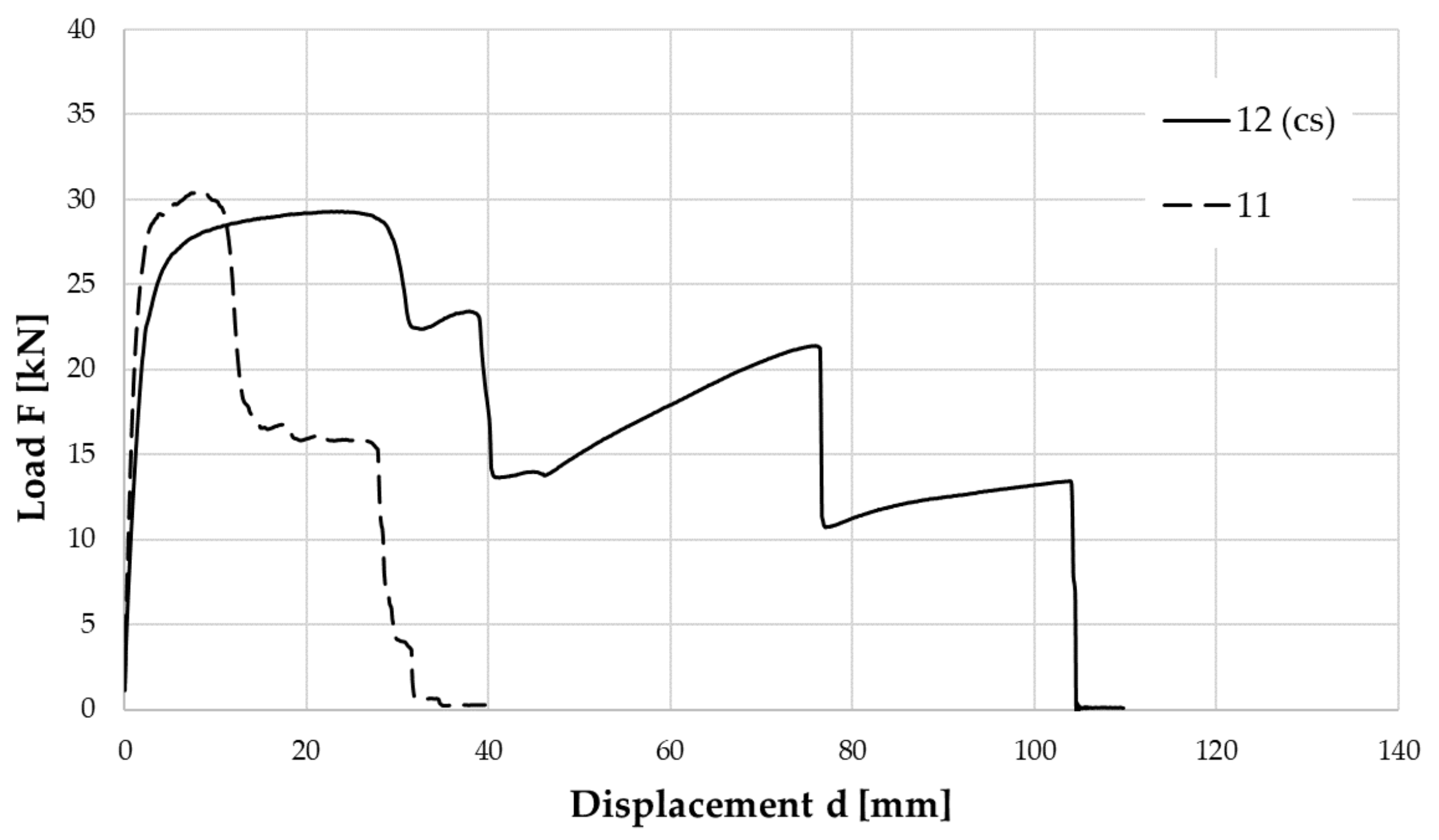
| Sample | Elastomer | G [MPa] | T [min] | Features |
|---|---|---|---|---|
| 0 | 35,713 | 1.4 | 135 | - |
| 1 * | 35,713 | 1.4 | 135 | - |
| 2 | 35,713 | 1.4 | 150 | - |
| 3 | 35,713 | 1.4 | 180 | - |
| 4 * | 35,718 | 0.8 | 135 | - |
| 5 | 35,718 | 0.8 | 150 | - |
| 6 | 35,718 | 0.8 | 180 | - |
| 7 * | 34,821 | 0.4 | 135 | - |
| 8 | 34,821 | 0.4 | 150 | - |
| 9 | 34,821 | 0.4 | 180 | - |
| 10 | 35,713 | 1.4 | 135 | Corundum sandblasting of steel. |
| 11 | 312 | 0.8 | 135 | - |
| 12 * | 27,303 | 0.8 | 135 | - |
| 13 | 27,303 | 0.8 | 150 | - |
| 14a | 35,713 | 1.4 | 135 | Without external covering layer. |
| 14b | 35,713 | 1.4 | 135 | Without external covering layer. |
| 15a | 35,713 | 1.4 | 135 | Without external covering layer, elastomer without oily component. |
| 15b | 35,713 | 1.4 | 135 | Without external covering layer, elastomer without oily component. |
| 16a | 35,713 | 1.4 | 135 | Without external covering layer, refreshing of elastomer layers. |
| 16b | 35,713 | 1.4 | 135 | Without external covering layer, refreshing of elastomer layers. |
| 17a | 35,713 | 1.4 | 135 | Without external covering layer, presence of bridge layer. |
| 17b | 35,713 | 1.4 | 135 | Without external covering layer, presence of bridge layer. |
| 18a | 35,713 | 1.4 | 135 | Without external covering layer, refreshing of elastomer layers, presence of bridge layer. |
| 18b | 35,713 | 1.4 | 135 | Without external covering layer, refreshing of elastomer layers, presence of bridge layer. |
| Sample | G [MPa] | Vulcanization Time [min] | Type of Failure | |||
|---|---|---|---|---|---|---|
| 0 | 1.4 | 135 | 36.78 | 1.91 | 4.22 | - |
| 1 (cs) | 1.4 | 135 | 37.18 | 1.60 | 7.82 | Cohesive |
| 2 | 1.4 | 150 | 35.86 | 0.90 | 3.71 | Mixed |
| 3 | 1.4 | 180 | 37.65 | 1.10 | 2.11 | Adhesive |
| 4 (cs) | 0.8 | 135 | 24.77 | 3.31 | 5.12 | Cohesive |
| 5 | 0.8 | 150 | 14.62 | 1.30 | 3.01 | Adhesive |
| 6 | 0.8 | 180 | 12.60 | 26.30 | - | Mixed |
| 7 (cs) | 0.4 | 135 | 18.07 | 10.32 | 12.43 | Adhesive |
| 8 | 0.4 | 150 | 17.57 | 13.42 | 17.93 | Mixed |
| 9 | 0.4 | 180 | 14.12 | 8.43 | 15.03 | Not detected |
| Sample | Sandblasting Material | Type of Failure | |||
|---|---|---|---|---|---|
| 1 (cs) | Grit | 37.18 | 1.60 | 7.82 | Cohesive |
| 10 | Corundum | 36.32 | 1.00 | 3.21 | Mixed |
| Sample | Covering Layer | Type of Failure | |||
|---|---|---|---|---|---|
| 1 (cs) | Yes | 37.18 | 1.60 | 7.82 | Cohesive |
| 14a | No | 35.34 | 1.41 | 2.91 | Mixed |
| 14b | No | 33.42 | 1.71 | 3.12 | Mixed |
| Average 14a and 14b | 34.38 | 1.56 | 3.02 |
| Sample | Oily Component | Type of Failure | |||
|---|---|---|---|---|---|
| 14a (cs) | Yes | 35.34 | 1.41 | 2.91 | Mixed |
| 14b (cs) | Yes | 33.42 | 1.71 | 3.12 | Mixed |
| Average 14a and 14b | 34.38 | 1.56 | 3.02 | ||
| 15a | No | 37.22 | 1.20 | 30.45 | Cohesive |
| 15b | No | 35.23 | 1.28 | 17.80 | Cohesive |
| Average 15a and 15b | 36.23 | 1.24 | 24.13 |
| Sample | Refreshed Elastomer | Bridge Layer | Type of Failure | |||
|---|---|---|---|---|---|---|
| 14a (cs) | No | No | 35.34 | 1.41 | 2.91 | Mixed |
| 14b (cs) | No | No | 33.42 | 1.71 | 3.12 | Mixed |
| Average 14a and 14b | 34.38 | 1.56 | 3.02 | |||
| 16a | Yes | No | 34.29 | 123.34 | 123.61 | Abnormal |
| 16b | Yes | No | 34.16 | 1.51 | 4.52 | Adhesive |
| 17a (cs) | No | Yes | 34.77 | 3.31 | 2.32 | Adhesive |
| 17b (cs) | No | Yes | 32.83 | 2.61 | 4.91 | Adhesive |
| Average 17a and 17b | 33.80 | 2.96 | 3.62 | |||
| 18a | Yes | Yes | 29.50 | 2.41 | 16.63 | Mixed |
| 18b | Yes | Yes | 32.33 | 1.61 | 36.46 | Cohesive |
| Average 18a and 18b | 30.92 | 2.01 | 26.55 |
| Sample | Rubber Type | Compound Type | Type of Failure | |||
|---|---|---|---|---|---|---|
| 4 (cs for 12) | natural | - | 24.77 | 3.31 | 5.12 | Cohesive |
| 11 | - | non-dissipative | 30.38 | 7.62 | 11.03 | Cohesive |
| 12 (cs for 11) | synthetic | dissipative | 29.34 | 23.34 | 29.25 | Mixed |
Publisher’s Note: MDPI stays neutral with regard to jurisdictional claims in published maps and institutional affiliations. |
© 2020 by the authors. Licensee MDPI, Basel, Switzerland. This article is an open access article distributed under the terms and conditions of the Creative Commons Attribution (CC BY) license (http://creativecommons.org/licenses/by/4.0/).
Share and Cite
Pauletta, M.; Pinzano, F.; Frappa, G.; Russo, G. Tensile Tests for the Improvement of Adhesion between Rubber and Steel Layers in Elastomeric Isolators. Appl. Sci. 2020, 10, 8063. https://doi.org/10.3390/app10228063
Pauletta M, Pinzano F, Frappa G, Russo G. Tensile Tests for the Improvement of Adhesion between Rubber and Steel Layers in Elastomeric Isolators. Applied Sciences. 2020; 10(22):8063. https://doi.org/10.3390/app10228063
Chicago/Turabian StylePauletta, Margherita, Federico Pinzano, Giada Frappa, and Gaetano Russo. 2020. "Tensile Tests for the Improvement of Adhesion between Rubber and Steel Layers in Elastomeric Isolators" Applied Sciences 10, no. 22: 8063. https://doi.org/10.3390/app10228063
APA StylePauletta, M., Pinzano, F., Frappa, G., & Russo, G. (2020). Tensile Tests for the Improvement of Adhesion between Rubber and Steel Layers in Elastomeric Isolators. Applied Sciences, 10(22), 8063. https://doi.org/10.3390/app10228063




